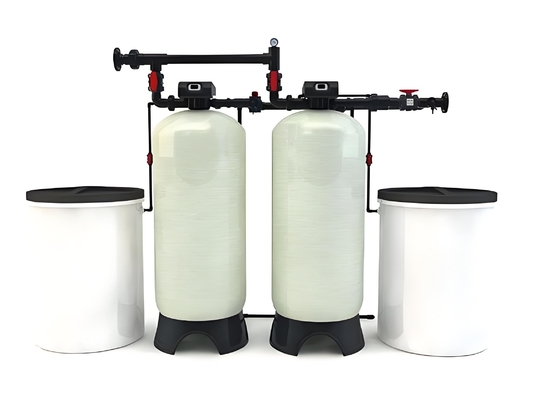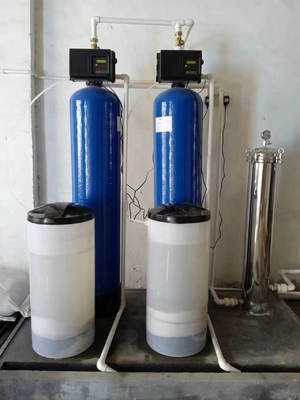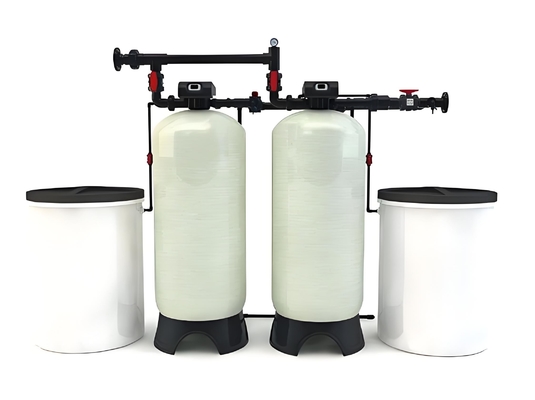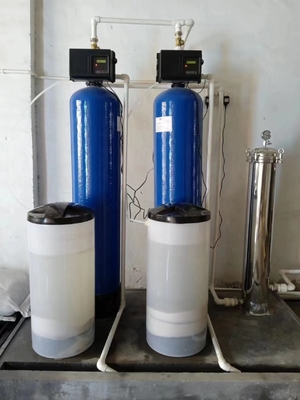-
Condensate Water Recovery Device
-
Reverse Osmosis Equipment
-
Fully Automatic Water Softener
-
Industrial Sand Filter
-
Water Supply Equipment
-
Chemical Dosing Device
-
Container Flipper
-
Container Loading and Unloading Machine
-
Truck Flipper
-
Electric Transfer Cart
-
Electronic Weighbridge
-
Mobile Loading Dock Ramp
-
Air Compressor Heat Recovery
-
Water Treatment Accessories
Reliability Two Tank Water Softener System Equipment / 2 Stage Water Softener For Industrial Boilers

Contact me for free samples and coupons.
Whatsapp:0086 18588475571
Wechat: 0086 18588475571
Skype: sales10@aixton.com
If you have any concern, we provide 24-hour online help.
x| Features | High Automation Level, Stable Water Quality, High Efficiency, Low Energy Consumption, Low Operating Costs. | Origin | Taian, Shandong |
|---|---|---|---|
| Brand | Tonglida | Product Specifications | 1-100T/H |
| Product Information | Automatic Water Softening Equipment - Dual-Tank, Single-Tank, Continuous Water Production | Application Fields | Industrial Boilers, Central Air Conditioning Systems, Heat Exchangers, Hotels, Restaurants, Food And Chemical Industries, Laundry And Dyeing, Medical And Sanitation, Etc. |
| Materials | Fiberglass Reinforced Plastic (FRP), Stainless Steel, Carbon Steel | ||
| Highlight | reliability two tank water softener system,reliability 2 stage water softener,industrial 2 stage water softener |
||
Product Description:
The use of a fully automatic water softener is becoming increasingly popular among homeowners and businesses. This type of system is equipped with a comprehensive automatic control system that eliminates the need for manual monitoring. Additionally, it can be customized as a single-tank or dual-tank system according to user requirements. The entire system operates automatically, ensuring that one tank is in use while the other serves as a backup. This guarantees a consistent supply of soft water at all times.
When the operating tank reaches the set water production capacity, it automatically goes into regeneration mode, and the backup tank takes over the operation. The entire softening system operates in a fully automatic mode, and the operation of the softening tank includes several process stages: running, backwashing, brine suction, ion exchange, forward flushing, and standby.
The raw water flows through the resin tank containing ion exchange resin, which is equipped with an automatic control valve. The exchangeable ions Na+ in the resin undergo ion exchange with the cations (Ca2+, Mg2+) in the water, resulting in the water hardness of the softener outlet being ≤0.03mmol/L.
When the system reaches the set flow rate, the controller automatically initiates the regeneration process. The main steps involved are as follows:
- Backwashing: Water is directed upward through the bottom distributor to flush and loosen the resin bed, simultaneously removing accumulated suspended particles from the resin surface.
- Brine Suction Regeneration: Saturated brine solution is injected into the resin tank through the brine injector after dilution to a concentration of 5-8%. The brine solution flows downward through the deactivated resin bed, regenerating the resin and restoring its original exchange capacity.
- Exchange: The exchange process consists of two steps. In the first step, after the regeneration liquid is injected, there is still some regeneration brine in the upper space of the resin tank that has not participated in the regeneration process. To fully utilize this brine, clean water with the same flow rate as the regeneration liquid is used to thoroughly regenerate the uninvolved brine through the resin bed. In the second step, the regeneration waste liquid in the resin pores is displaced from the resin bed.
- Forward Flushing: The purpose of forward flushing is to completely remove the residual regeneration waste liquid from the resin bed and clean it until the water meets the required standards.
With a fully automatic water softener, you can be assured of continuous supply of soft water without worries about downtime or manual input. It is a reliable and convenient solution for your water softening needs.
| Project Name | Unit | 1T/H | 10T/H | 20T/H | 30T/H | 40T/H | 50T/H | 60T/H | 80T/H | 100T/H | |
| Inlet pressure | mpa | 0.15-0.25 | |||||||||
| Water production | T/H | 0.8-1.2 | 9-11 | 18-22 | 27-33 | 35-45 | 45-55 | 55-65 | 70-90 | 90-110 | |
| Raw water turbidity | O | ≤2 | |||||||||
| Raw water hardness | mmol/L | ≤15 | |||||||||
| Residual hardness of soft water | mmol/L | ≤0.03 | |||||||||
| Self-consumption water rate | % | 4 | |||||||||
| Power supply | Single-phase electricity 50HZ 220V | ||||||||||
| Diameter of exchange column | Stainless steel head | mm | ∅650 | ∅750 | ∅900 | ∅900 | ∅1000 | ∅1200 | ∅1400 | ||
| Ordinary head | mm | ∅160 | ∅420 | ∅640 | ∅760 | ∅890 | ∅900 | ∅1000 | ∅1180 | ∅1400 | |
| Resin tank height | mm | 1800 | |||||||||
| Inlet and outlet water pipeline | Solenoid valve | mm | DN15 | DN65 | DN65 | DN80 | DN80 | DN100 | DN125 | DN150 | |
| Valve body | mm | DN20 | |||||||||
| Flow meter | L/H | 60 | 160 | 400 | 600 | 1000 | 1000 | 2000 | 2000 | 2500 | |
| Resin filling capacity | Solenoid valve | KG | |||||||||
| Total weight of equipment | KG | ||||||||||
| Salt tank size | Self-processing | mm | 225*650 | 410*650 | 640*750 | 640*750 | 700*850 | 760*800 | 760*800 | 890*800 | |
| Purchase from outside | 800L | 1000L | 1500 | 2000 | |||||||
Features:
Our system boasts of a high level of automation, which means that our clients can rely on our equipment to perform tasks accurately and consistently without the need for constant human supervision. This helps to reduce errors and increase efficiency, resulting in significant cost savings for our clients.
Another advantage of our system is its ability to maintain stable water quality. Our water treatment equipment is designed to remove impurities and contaminants from water sources, ensuring that the treated water meets specific quality standards set by our clients.
The high efficiency of our system is a result of continuous improvements in our technology and processes. Our equipment is optimized for maximum performance and output, allowing our clients to achieve their goals quickly and efficiently.
Our system also boasts of low energy consumption, which means that users can maximise their production output while minimising their energy bills. The equipment is designed to be energy-efficient, helping reduce environmental impact as well.
Last but not least, our clients benefit from low operating costs, thanks to the durability and reliability of our equipment. With proper maintenance and servicing, our systems can last for several years, saving our clients money in the long run.
- High Automation Level
- Stable Water Quality
- High Efficiency
- Low Energy Consumption
- Low Operating Costs
Technical Parameters:
1. Simple and Reliable Operation with Automatic Control
The water softening equipment is designed to have automatic control, ensuring simple and reliable operation. This feature enables the equipment to perform with consistent efficiency, while ensuring the quality of softened water.
2. Strong Adaptability with High Efficiency Softening Capabilities
The equipment is capable of softening water with high hardness up to ≤15mmol/L to residual hardness ≤0.03mmol/L in a single pass, proving its strong adaptability and high efficiency.
3. Low Operating Costs with Regeneration and Low Consumption
This water softening equipment requires low resin consumption, low salt consumption, and short regeneration time, and ensures stable water quality. All of these benefits result in low operating costs.
4. Lightweight and Compact Design for Easy Installation and Small Footprint
The equipment boasts a compact and rational design and is lightweight, making it easy to install. Furthermore, it has a small footprint and can fit into spaces that require minimal space for installation.
5. Easy Installation and Operation for Instant Water Production
The complete machine is delivered from the factory making installation a breeze. Only the inlet and outlet pipes and power supply need to be connected to start water production, saving valuable time and resources.
Applications:
The automatic water softener is a device that is used to treat the circulating makeup water in various types of equipment and systems such as steam boilers, heat exchangers, air conditioning systems and more. This equipment is also used for domestic and industrial water treatment in multiple sectors such as food, pharmaceuticals, printing and dyeing, electronics and others. The softener works effectively for pre-treatment for desalination systems.
The primary purpose of the automatic water softener is to lower the hardness of the produced water that is used for a variety of purposes. The softener can significantly reduce the amount of calcium and magnesium ions in hard water through the use of single-stage or multi-stage water softeners.
The reduction of hardness in water is essential for the longevity of equipment and machinery. Hard water can cause damage, corrosion and build-up of minerals in pipes and other components. Thus, the requirement of the automatic softener arises and it an essential part of any water treatment process.
With the use of an automatic water softener, it is ensured that the water being used is free from unwanted minerals that can cause damage to equipment and systems. The softener makes water suitable for multiple industrial and domestic water uses.






